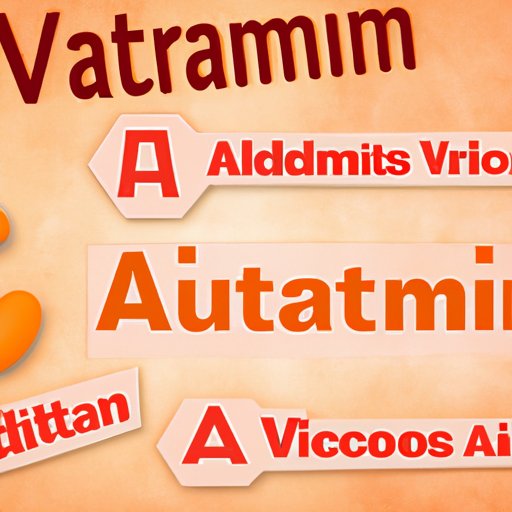
Introduction
Vitamin A is an essential nutrient that plays a vital role in maintaining healthy vision, skin, and immune system function. However, as with everything in life, too much of a good thing can have negative consequences. In this article, we’ll explore the risks associated with excessive intake of Vitamin A and offer tips on how to maintain a healthy balance.
Recommended Daily Intake of Vitamin A
The recommended daily intake of Vitamin A varies based on age, sex, and other factors such as pregnancy and lactation. According to the National Institutes of Health, the daily intake guidelines for Vitamin A are:
- Infants (0-6 months): 400 mcg/day
- Infants (7-12 months): 500 mcg/day
- Children (1-3 years): 300 mcg/day
- Children (4-8 years): 400 mcg/day
- Children (9-13 years): 600 mcg/day
- Teens and Adults (14+ years): 700-900 mcg/day
- Pregnant women: 770-1300 mcg/day, depending on trimester
- Lactating women: 1200-1300 mcg/day
Common food sources of Vitamin A include sweet potatoes, carrots, spinach, kale, and beef liver. Vitamin A is also added to fortified foods such as milk and cereal.
Side Effects of Excess Vitamin A
Consuming high levels of Vitamin A can lead to a condition known as hypervitaminosis A, which can have both short and long-term consequences. Some common symptoms of Vitamin A toxicity include:
- Nausea
- Vomiting
- Headaches
- Dizziness
- Blurred vision
- Bone pain
- Hair loss
- Joint pain
In severe cases, hypervitaminosis A can lead to liver damage, as well as increased pressure in the brain, which can result in headaches and vision problems. Long-term toxicity can also increase the risk of osteoporosis and hip fractures in postmenopausal women.
High Amounts of Vitamin A in Foods and Supplements
Certain foods contain high amounts of Vitamin A, which can contribute to excessive intake. For example, one cup of cooked sweet potato contains approximately 1400 mcg of Vitamin A, which is nearly twice the recommended daily intake for an adult. Beef liver is another food that is high in Vitamin A, with one slice providing over 600% of the daily recommended intake.
In addition to food, some individuals may also take Vitamin A supplements. While supplements can be beneficial for those who are deficient in Vitamin A, taking too many supplements can lead to hypervitaminosis A. The dangers of taking too many Vitamin A supplements are especially high in pregnant women, as excessive intake can increase the risk of birth defects.
Case Studies
There have been several examples of individuals who have experienced Vitamin A toxicity due to excessive intake. In one case, a woman who consumed 3-4 pounds of raw polar bear liver per week (which is very high in Vitamin A) experienced severe hypervitaminosis A, which led to headaches, hair loss, and fatigue.
In another case, a group of healthy adults who took 25,000 IU of Vitamin A daily for several months experienced liver damage and bone loss. The recommended daily intake for adults is 700-900 mcg, which is significantly lower than the amount consumed by this group.
Tips to Reduce the Risk of Getting Too Much Vitamin A
If you’re concerned about getting too much Vitamin A, there are several steps you can take to reduce your risk:
- Avoid high-dose supplements: Unless you have a specific health condition that requires high doses of Vitamin A, it’s generally best to stick with the recommended daily intake.
- Eat a balanced diet: Consuming a variety of foods can help ensure that you’re getting all of the nutrients your body needs, including Vitamin A.
- Monitor your Vitamin A intake: If you’re consuming a lot of foods that are high in Vitamin A, consider tracking your intake to ensure that you’re not exceeding the recommended daily intake.
Conclusion
Vitamin A is an essential nutrient that is important for maintaining overall health and wellness. However, too much of a good thing can be harmful. By following the recommended daily intake guidelines and being mindful of the amount of Vitamin A in your diet, you can reduce your risk of hypervitaminosis A and stay healthy for years to come.





